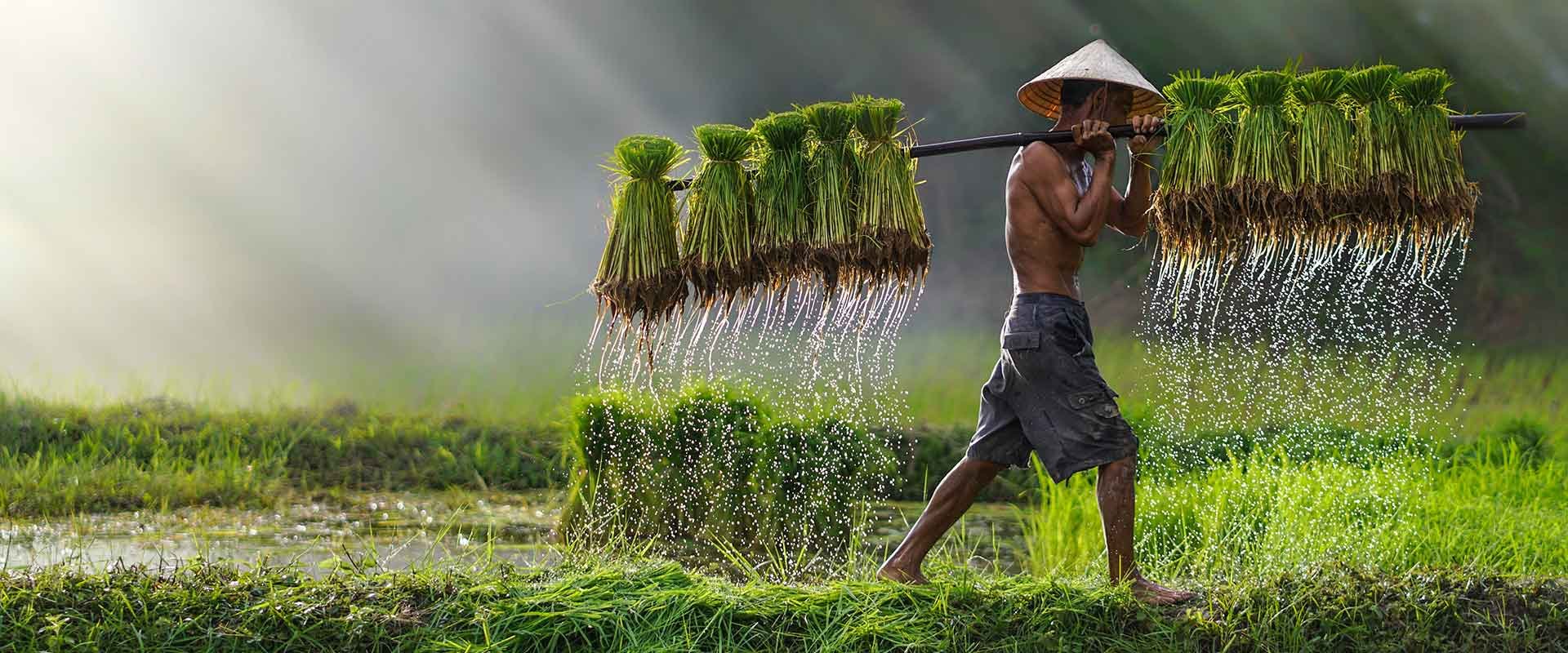The evolution of food production
life sciences

life sciences
Methods of food production are inextricably linked to the health of our population and planet: how we produce food plays a major role in shaping our society and environment. How has food production evolved over the years? Where are we headed in the future?
Throughout time, the way we’ve produced food has changed dramatically. Our demand for food has evolved from ensuring a basic supply to focusing on nutrition, health and environmental sustainability. Read on as we explore the fascinating evolution of food production
For thousands of years, our ancestors hunted animals and gathered plant foods to sustain themselves, relying on teamwork and fertile environments for survival. In this era, producing food involved direct labour, which was occasionally dangerous. Sources of food were often inconsistent. People lived a nomadic life, moving on when sources of food dried up.

As early as 11,000 BCE, humans started to settle in communities and seek more reliable means of food. They began cultivating crops and raising animals for food, bringing about the dawn of agriculture. While the transition to agriculture developed independently around the world, it is believed to have first kicked off in the ‘Fertile Crescent’ of the Middle East – a region with an advantageous combination of plants and animals.
By 6,000 BCE, most farm animals we are acquainted with today had been domesticated. By 5000 BCE, agriculture was practiced on every major continent except Australia. As technology developed, food trade became international, with ships crossing seas carrying spices from the Middle East, wine and olive oil from Greece and grain from Egypt.

In the Middle Ages, technology – primitive though it was – began to play a role is the mass production of food. The development of the plough reached Germany by the eight century, opening up a new grain source for the rest of the continent. Mills powered by wind or water sprang up across Europe in the eleventh century, enabling large-scale production of flour. As civilisations advanced, the decline of feudalism and increase of cities and towns enabled agriculture to move from subsistence to a market orientation.
Different regions specialised in different foods, with investment poured into the mass production of that food. Land was worked hard: marshy land was drained, crops were rotated and planting intensified to meet the growing demand of urban populations. By 1700, European agriculture could produce approximately 2.5 times the yield per input of seed that had been standard in the Middle Ages.

In modern times, two main innovations have enabled food production to keep pace with a booming population: fertilisers and machinery. Introduced in the early 1900s, synthetic fertilisers dramatically increased crop yields, removing the need for farmers to use fallows or manure to renew the soil. The mechanisation of agriculture accelerated in the nineteenth century, bringing mechanical seed drills, the tractor, electric milking machines and other innovations that enabled faster planting, harvesting and processing of food. Advancements in the preservation of food – such as canning and pasteurisation – enabled foods to be kept longer and transported further, resulting in access to a greater variety of food all over the world.

In the early-to-mid 20th century, industrialised nations intensified food production through selective plant breeding and fertilisers, but developing countries without industrial farming methods struggled to feed their ever-expanding populations. To combat rising world hunger, an international program was launched in the 1950s and 1960s called ‘The Green Revolution’. The program prioritised growth of high yield varieties of high calorie crops such as rice and wheat, expanding modern agriculture to a global scale and saving one billion people from starvation in the process.
As the world’s population continues to boom, global food production must increase 70 per cent by 2050 to meet the demand. While current agricultural methods have played an important role in increasing food production to feed the world up to this point, they have also brought unintended negative consequences. Our current methods of food production are not sustainable and present a threat to future food security. Animal agriculture is one of the greatest contributors to global warming, emitting more greenhouse gases than all cars, trucks, trains, and airplanes combined.
Fertilisers and pesticides, while increasing crop yields, have negatively impacted environments. At their current rate of increase, they run the risk of destroying ecosystems and contaminating groundwater supplies. Current farming methods use an immense amount of water and accelerate the loss of biodiversity. The Green Revolution, while successful in reducing starvation, has caused malnutrition to spread amongst vulnerable populations through its focus on unbalanced, carbohydrate intense diets.

Fortunately, as our history of food production demonstrates, humans have the ability to adapt to a changing world. New technologies are being explored to ensure ongoing food security. Crop diversification is now being enacted to reverse the monoculture brought about by The Green Revolution, ensuring people around the world have access to balanced diets. Regenerative agriculture is being used to replenish soil and combat climate change, bringing back traditional practices such as soil rotation, agroforestry and no-till farming to reverse environmental damage caused by The Green Revolution.
Synthetic biology is an exciting new field which allows food to be manufactured without common allergens and the current reliance on pesticides and fertilisers. In the case of cell culture meat, it also opens doors to a low-carbon and efficient means of meat production in the future. While controversial, genetic modification of plant foods is also being explored to insert traits beneficial to humans – such as rice fortified with extra vitamins to ward off blindness. As we enter a new era of food production, the challenge is not to simply produce more food, but to ensure the protection of our food chain, optimise human health, and sustain life on our planet.
Brunel’s entrepreneurial spirit and background as a technical role specialist make it a natural partner for life science ventures. Speak with our experienced team today!